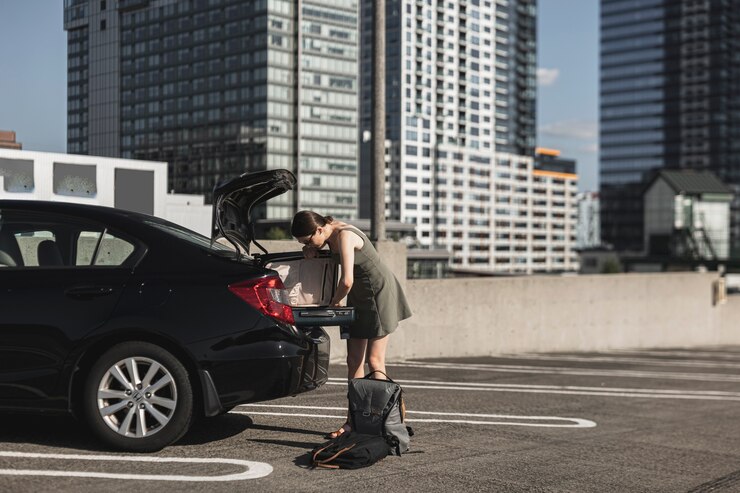
1. **Staying Clear of Traffic on Two Wheels**
2. **Cycling Smart: Steering Clear of Cars**
3. **Pedaling Safely Through the Streets**
4. **Navigating the Road: A Cyclist’s Guide to Avoiding Cars**
5. **Riding with Caution: Keeping a Safe Distance from Vehicles**
6. **Wheeling Through Without Worry: Tips for Car-Free Cycling**
7. **Sharing the Road: How Cyclists Can Stay Out of Harm’s Way**
Let me know if you’d like the tone to be more formal, playful, or technical!
There’s something special about the freedom you feel when you’re riding your bike down a quiet road, wind in your hair and sun on your face. But it’s important to remember that cars can appear at any moment.
Like it or not, cyclists and drivers have to share the road. Riding in traffic can be risky, especially if you’re not sure how to stay safe. This guide will help you learn how to avoid cars while cycling so you can enjoy your ride with peace of mind.
When planning your route, try to steer clear of busy roads. Main streets tend to have heavier traffic, so opt for quieter side streets or bike paths whenever possible. These routes are usually more peaceful and let you focus on the ride instead of dodging cars.
Rush hour—typically around 8 a.m. and 5 p.m.—is a particularly dangerous time to be on the road. If you can, avoid riding during these peak hours. More cars on the road mean more chances for accidents, so plan your rides for less busy times.
Of course, avoiding traffic isn’t always an option, especially if you’re commuting or running errands. In those cases, take extra care. Choose the safest route, even if it’s a bit longer. A few extra minutes are worth it if it means getting to your destination safely.
Look for roads with wide shoulders—at least six feet across. The more space between you and passing cars, the better. These roads also give you more room to swerve around potholes or other obstacles. Still, stay alert, as some drivers may try to pass too closely.
Bike lanes are another great option. These designated lanes are often separated from traffic by a painted line or even a physical barrier. They offer a bit more protection, but not all bike lanes are the same. Some are narrow, while others are more spacious. Choose routes with bike lanes that make you feel safe and comfortable, and always stay aware of your surroundings.
One common cause of accidents is when a driver turns in front of a cyclist. This can happen if the driver doesn’t see you or misjudges your speed. When approaching intersections or driveways, slow down and assess the situation. Wear bright clothing to make yourself more visible, and try to make eye contact with drivers. If they don’t seem to notice you, it’s best to slow down or stop until it’s safe to continue.
Driveways can also be tricky. Cars pulling out might not see you coming, so keep a safe distance and be ready to stop if needed. Even if you have the right of way, it’s better to be cautious than to assume drivers will always be careful.
If you’re riding during risky times—like rush hour or at dusk when visibility is low—consider moving your ride indoors. There’s no shame in staying safe. Indoor options like bike trainers, rollers, or spin classes can help you stay in shape without the hazards of traffic.
Another great way to avoid cars is by riding on trails. These paths are usually shared with walkers, runners, and other cyclists, so there’s little to no vehicle traffic. You’ll still need to watch out for others and yield when necessary, but overall, trails offer a safer and more relaxing ride.
Trails can also be scenic and fun to explore. Many run through parks or nature areas, giving you a chance to enjoy beautiful views you wouldn’t see on the road. You might even discover new favorite routes to places you visit often.
If you’re open to it, consider using a gravel bike. These bikes are designed for unpaved trails and can handle surfaces like gravel or limestone, giving you even more trail options to explore.
Since cars are bigger and faster, it’s crucial to make yourself as visible as possible. Bright, reflective clothing helps, and you can also use reflective gear like vests, armbands, or even reflective tires. If you’re riding in low light or at night, lights are a must. Attach them to the front, back, and sides of your bike so drivers can see you from every angle.
Flashing lights are especially useful at night. They come in different colors and patterns, and the more eye-catching, the better. Just make sure they’re not so bright that they blind others. You want to be seen, not cause an accident.
Stick to well-lit roads whenever possible. If a road doesn’t have streetlights, it might be too risky to ride on, especially if you’re not easily visible.